#Himalayan maidenhair fern
Text
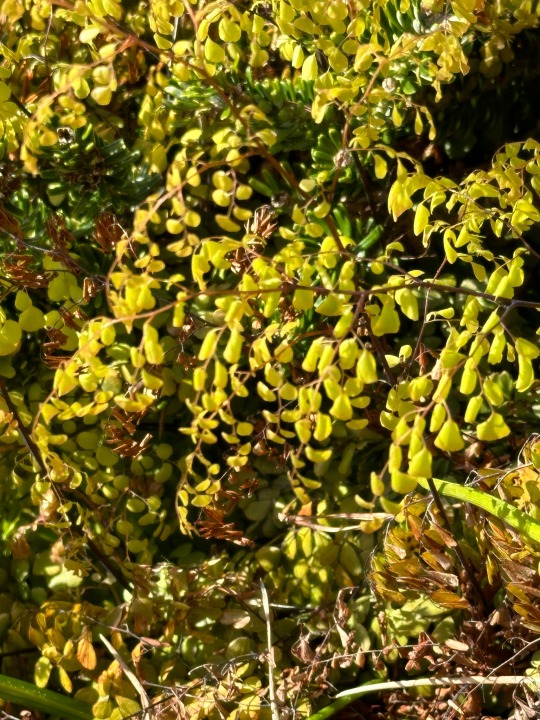
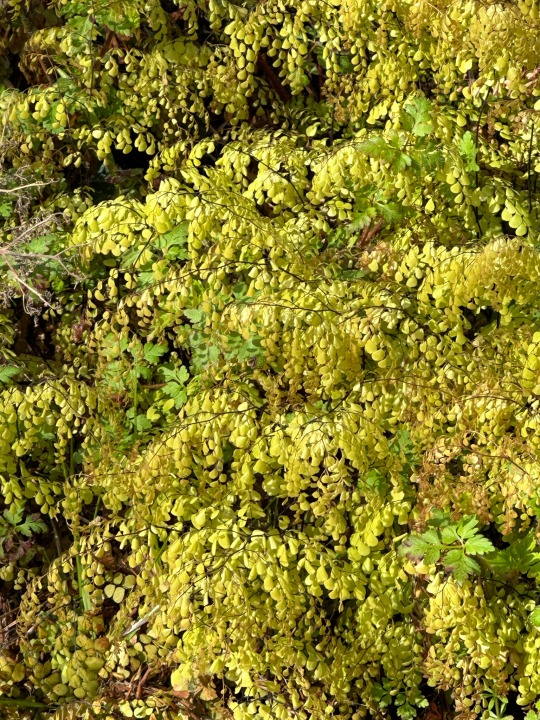

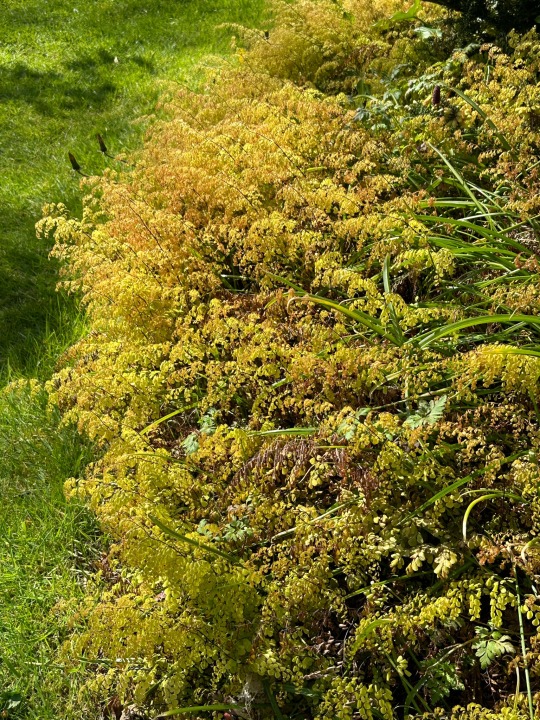
Plant of the Day
Wednesday 15 May 2024
Native to China and the Himalayas Adiantum venustum (evergreen maidenhair fern, Himalayan maidenhair fern) is a deciduous fern but usually remains evergreen to -10 °C when it will be deciduous. This plant needs a moist environment with soil containing a large amount of humus.
Jill Raggett
#Adiantum#evergreen maidenhair fern#Himalayan maidenhair fern#fern#plants#horticulture#garden#gardens#botanic garden#aberdeen#herbaceousperennial
85 notes
·
View notes
Text
Garden update:
I have planted the Himalayan maidenhair ferns, the skullcap, the hellebore seedlings, and the stachys.
This makes 50 perrenial plants I have added to the garden! I'm very excited about reaching this landmark moment. I am going to go celebrate by planting a mystery tomato!
6 notes
·
View notes
Photo

There's a Himalayan Maidenhair fern? Very nice! (not my plant, belongs to @teenytinyterra) ~ ~ #houseplants #fern #fernlove #foliage #plantlife #botany #urbanjungle #greenfingers #houseplants #plantlove #natureinspired #naturegram #urbanjunglebloggers #houseplantclub #houseplantjournal #plants #plantgoals (at Toronto, Ontario)
#plantlife#houseplantclub#plantlove#fernlove#plants#greenfingers#urbanjunglebloggers#houseplantjournal#urbanjungle#fern#foliage#natureinspired#plantgoals#naturegram#houseplants#botany
75 notes
·
View notes
Text
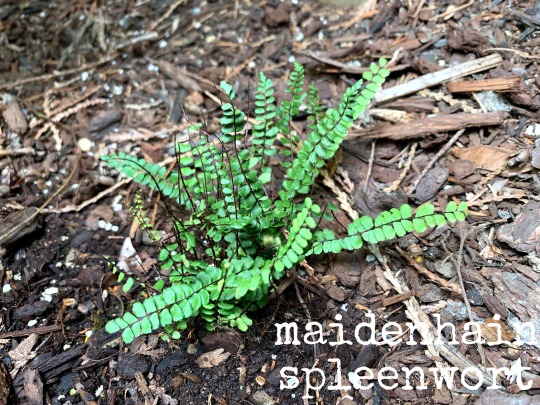

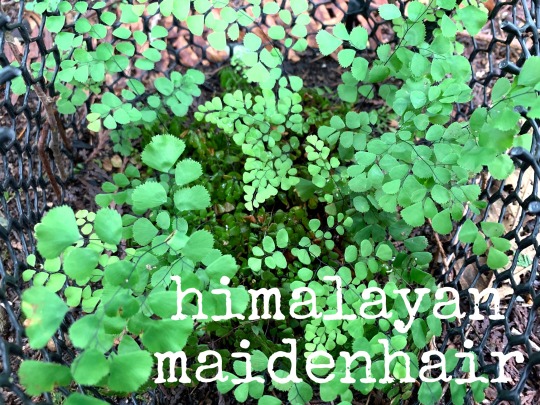

maidenhair ferns 🌿
spleenwort
maris's
himalayan
button (not a maidenhair but similar)
0 notes
Text
Rare and unusual plant sale's a draw for Nova Scotia town
ANNAPOLIS ROYAL, N.S. -- They're lined up three deep after lunch, eagerly awaiting the 1 o'clock opening. A bright yellow rope barrier holds everyone back.
An outdoor concert? Black Friday at Walmart? No -- these folks are at the Annapolis Royal Farmer's Market for the Atlantic Canada Rare and Unusual Plant Sale.
Nova Scotia is full of keen gardeners, and the late-spring sale has come to mark the unofficial start to gardening season here. Now in its eighth year, the sale was started by horticulturalist Jill Covill, who runs Bunchberry Nurseries just outside town. She spearheaded a community magnolia tree planting project 20 years ago, with 30 different cultivars and over 100 trees, turning Annapolis Royal into a magnolia capital.
"We were getting lots of high-season and early-fall visitors, but we wanted to draw people here in the shoulder season," Covill says.
Nestled beside the Annapolis River and Bay of Fundy waters, the valley town is protected from the fiercest Atlantic weather by a gently ridged mountain. Locals refer to the area, which lies in USDA hardiness zone 5A, as the province's "banana belt"; its relatively extended warm, sunny and robust growing season attracts many green thumbs.
Rare plant sales are popular in many places where conditions make for avid gardening. The Atlantic Canada sale focuses on unusual flora. About 20 vendors now take part, and hundreds of people attend, from as far away as Ontario.
"It's now an integral part of the spring season in Annapolis Royal," says Jane Nicholson, who owns an interior decor store in town and is a long-time member of the chamber of commerce. "It contributes immeasurably to the business and cultural life of the area."
This year, on a cool but sunny Sunday in late May, Peter Davies, the town crier charged with announcing pretty much anything official, was in his bright red, yellow and black period costume. He grandly called the sale open with a countdown.
Soon, the booths were buzzing with customers. Jean Smith clutched a Japanese maple, its slender, fountain-like leaves evocative of the harp strings for which the tree is named: "Koto no Ito." Friends expressed their admiration for her find.
There was much exclaiming over discoveries.
"Oh nice, what's that, Heather?!"
"Marsh marigold!"
"Wow, that's beautiful, Jim!"
"Thanks, it's a Troat's Dwarf Birch!"
Marcia Field, wearing a periwinkle sweater and straw hat, toted a vibrant dwarf yellow yew that caught the sunshine.
"I have a gorgeous deep blue ceramic pot at home; I think it's going to look wonderful," she beamed.
Iain Jack, owner of Fernwood Nursery in nearby Hubbards, displayed an elegant Lady in Red fern with red-violet stems, and an eared lady fern that transitions from chartreuse to deep green. Both generated lots of interest, as did a few pots of frothy green leaves on ebony stems -- Himalayan maidenhair ferns, with new fronds emerging in a bronze-pink hue.
Ken Shannik of Insigne Gardens in Halifax sold out of his pink bloodroot early.
Other folks strode off with rare yellow peonies and garnet red ones. Japanese mayapple was popular; deer don't like it, so it's good for country gardens.
There were tables full of succulents and alpine plants.
Dave Veinotte of Reo Nursery in Mahone Bay showed a rare Greenwood Lakes dwarf hemlock -- 12 years old, a diminutive tree prized by bonsai collectors.
There was even a plant-themed craft-beer vendor, Lazy Bear Brewery from Smith's Cove. Visitors sampled a stout featuring a blend from provincial roaster Sissiboo Coffee, an India Pale Ale made with local hops, and a beer brewed with rose hips from wild and windswept Brier Island.
from CTV News - Atlantic http://ift.tt/2rRV1U3
0 notes
Text
Hyperallergic: The Early-20th-Century Photographer Who Magnified the Alien Beauty of Plants
Karl Blossfeldt, Polystichum munitum, western swordfern, young furled frond (courtesy D.A.P.)
Karl Blossfeldt originally made detailed photographs of plant specimens as teaching tools for his applied art students, building his own camera to magnify the sculptural qualities of seedpods, pumpkin tendrils, and horsetail shoots at up to 45 times their size. The 1928 publication of his book Urformen der Kunst (Art Forms in Nature) suddenly brought the Berlin professor widespread artistic acclaim, with critic and philosopher Walter Benjamin describing the “astonishing plant photographs” as revealing “the forms of ancient columns in horse willow, a bishop’s crosier in the ostrich fern, totem poles in tenfold enlargements of chestnut and maple shoots, and gothic tracery in the fuller’s thistle.”
Cover of Karl Blossfeldt: Masterworks (courtesy D.A.P.)
Karl Blossfeldt: Masterworks, out now from D.A.P., features 70 photographs selected from the thousands he created in his lifetime. Edited by Ann and Jürgen Wilde, photography collectors and the founders of the Karl Blossfeldt Archive, the chosen “masterworks” in the book showcase his eye for overlooked details in nature, like the leaf nodes dancing on a Himalayan balsam plant or the sharp geometric angles of a sea holly leaf. They also demonstrate his ability to make the most everyday plant appear alien, as in a photograph of three chestnut twigs arranged like gnarled totems.
“Did he really see columns and totem poles?” asks ecologist Hansjörg Küster in a foreword, referencing Benjamin’s commentary. “Did he see dancing figures or faces? Did he see something animalistic in botanical guise? Whatever the case, the images still urge us to associate them with other things and to perceive juxtapositions between different elements of our environment.” Küster also contributes notes on each specimen for the book’s index, identifying the stages of botanical life that Blossfeldt chose to portray, whether an asparagus shoot that had just emerged from the soil or stems growing on a head of lettuce that was not harvested in its prime.
With its incredible shapes set against neutral backgrounds, Blossfeldt’s photography continues to influence contemporary art, such as Robert Voit’s 2016 The Alphabet of New Plants, which replicated the professor’s perspective with mass-produced plastic plants. We’re so familiar with macrophotography today that it may be hard to return to the early-20th-century context and imagine how these images would have startled viewers with their revelations of intricate beauty in even the smallest bud of a violet. Yet they remain compelling examples of looking closely at the world around us.
Pages from Karl Blossfeldt: Masterworks (photo by the author for Hyperallergic)
Pages from Karl Blossfeldt: Masterworks (photo by the author for Hyperallergic)
Karl Blossfeldt, Acanthus mollis, bear’s breeches, flowering stem with bracts, flowers removed (courtesy D.A.P.)
Karl Blossfeldt, Papaver orientale, oriental poppy, flower bud (courtesy D.A.P.)
Karl Blossfeldt, Eryngium bourgatii, Mediterranean sea holly, leaf (courtesy D.A.P.)
Karl Blossfeldt, Serratula nudicaulis, saw-wort, seed heads (courtesy D.A.P.)
Karl Blossfeldt, Cucurbita sp., pumpkin, tendrils (courtesy D.A.P.)
Karl Blossfeldt, Allium oreophilum, pink lily leek, flower head (umbel) (courtesy D.A.P.)
Karl Blossfeldt, Dipsacus laciniatus, cutleaf teasel, stem with leaves (courtesy D.A.P.)
Karl Blossfeldt, Adiantum pedatum, maidenhair fern, young frond (courtesy D.A.P.)
Karl Blossfeldt, Impatiens glandulifera, Himalayan balsam, leaf nodes (courtesy D.A.P.)
Karl Blossfeldt, Phalaris canariensis, canary grass, in fruit (courtesy D.A.P.)
Karl Blossfeldt: Masterworks, edited by Ann and Jürgen Wilde, is published by D.A.P.
The post The Early-20th-Century Photographer Who Magnified the Alien Beauty of Plants appeared first on Hyperallergic.
from Hyperallergic http://ift.tt/2pq3YEB
via IFTTT
0 notes